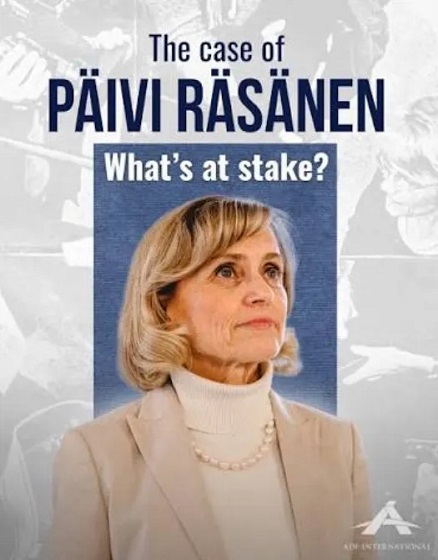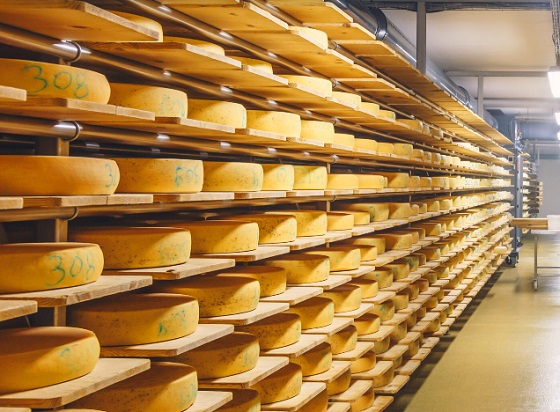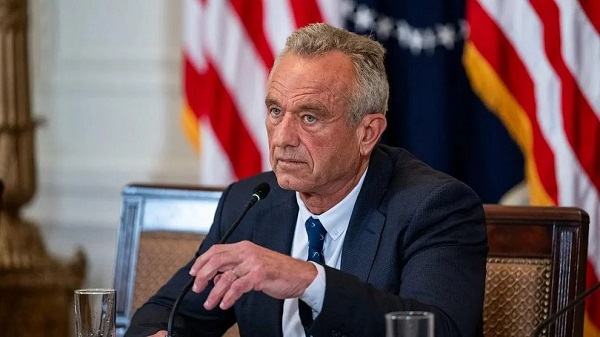Uncategorized
Over 800 dead in Indonesia quake and tsunami; toll may rise

PALU, Indonesia — Rescuers struggled Sunday to reach victims in several large coastal towns in Indonesia that were hit by an earthquake and tsunami, and authorities feared that the toll of more than 800 confirmed dead would rise.
With the area largely cut off by damaged roads and downed communications lines, military and commercial aircraft were delivering some aid and supplies to the hard-hit city of Palu on the island of Sulawesi, and others in the region.
But there was a desperate need for heavy equipment to reach possible survivors buried in collapsed buildings, including an eight-story hotel in Palu where voices were heard in the rubble. A 25-year-old woman was found alive during the evening in the ruins of the Roa-Roa Hotel, according to the National Search and Rescue Agency, which released photos of the her lying on a stretcher covered in a blanket.
At least 832 people were confirmed killed by the quake and tsunami that struck Friday evening, Indonesia’s disaster agency said, with nearly all of those from Palu. The regencies of Donggala, Sigi and Parigi Moutong — with a combined population of 1.2 million — had yet to be fully assessed.
“The death toll is believed to be still increasing, since many bodies were still under the wreckage, while many have not been reached,” said disaster agency spokesman Sutopo Purwo Nugroho.
Bodies covered in blue and yellow tarps lined the streets of Palu, and officials said they were digging a mass grave for at least 300 of the dead.
It was not immediately known when the burial would take place, but “this must be done as soon as possible for health and religious reasons,” said Willem Rampangilei, head of the National Disaster Mitigation Agency. Most of Palu’s residents are Muslim.
The cries from beneath the Roa-Roa Hotel, which appeared to have toppled over with its walls splintered like pickup sticks, went silent by Sunday afternoon. Officials had estimated about 50 people could be inside.
“We are trying our best. Time is so important here to save people,” said Muhammad Syaugi, head of the national search and rescue team. “Heavy equipment is on the way.”
Metro TV showed about a dozen rescuers in orange jumpsuits climbing over debris with a stretcher carrying the body of a victim from the modest business hotel.
Other rescuers worked to free a 15-year-old girl trapped under concrete in her house in Palu after it collapsed on her family during the magnitude 7.5 earthquake that spawned a tsunami.
Unable to move her legs under the rubble, Nurul Istikharah was trapped beside her dead mother and niece. Rescuers also tried to control water from a leaking pipe, fearing she would drown.
Istikharah was unconscious during part of the effort to free her, but rescuers kept talking to her to try to keep her awake. Others offered her food and water.
Indonesian President Joko “Jokowi” Widodo toured Palu on Sunday and said rescuers were having difficulty reaching victims because of a shortage of heavy equipment.
“There are many challenges,” Jokowi said. “We have to do many things soon, but conditions do not allow us to do so.”
He said authorities were deploying more heavy machinery so emergency workers can help recover more victims Monday.
The stricken areas also needed medical supplies, fuel, fresh water and experts.
It was the latest natural disaster to hit Indonesia, which is frequently struck by earthquakes, volcanic eruptions and tsunamis because of its location on the “Ring of Fire,” an arc of volcanoes and fault lines in the Pacific Basin. In December 2004, a massive magnitude 9.1 earthquake off Sumatra island in western Indonesia triggered a tsunami that killed 230,000 people in a dozen countries. More recently, a powerful quake on the island of Lombok killed 505 people in August.
In Donggala, the site closest to the epicenter of Friday’s earthquake, aerial footage on Metro TV showed the sugary blond sands of beaches swept out to sea, along with some buildings. Some buildings in the town were severely damaged, with plywood walls shredded and chunks of concrete scattered on the pavement. Much of the damage, however, appeared limited to the waterfront.
Palu, which has more than 380,000 people, was strewn with debris from the earthquake and tsunami. A heavily damaged mosque was half submerged and a shopping mall was reduced to a crumpled hulk. A large bridge with yellow arches had collapsed.
The city is built around a narrow bay that apparently magnified the force of the tsunami as the waves raced into the tight inlet. Nugroho, the disaster agency spokesman, said waves were reported as high as 6
Looters hit a badly damaged shopping mall, apparently unconcerned for their safety amid ongoing aftershocks and the structure’s questionable stability.
In one devastated area in Palu, residents said dozens of people could still be buried in their homes.
“The ground rose up like a spine and suddenly fell. Many people were trapped and buried under collapsed houses. I could do nothing to help,” resident Nur Indah said, crying. “In the evening, some of them turned on their cellphones just to give a sign that they were there. But the lights were off later and the next day.”
With hundreds injured, earthquake-damaged hospitals were overwhelmed.
Nugroho said 61 foreigners were in Palu at the time of the disaster. Most were accounted for, but one South Korean was believed to be trapped in the Roa-Roa Hotel, while three others from France and one from Malaysia were missing. The survivors were to be evacuated to the Sulawesi city of Makassar in the island’s far south.
Communications with the area were difficult because power and telecommunications were cut, hampering rescue efforts. Most people have slept outdoors, fearing strong aftershocks.
Indonesia is a vast archipelago of more than 17,000 islands that span a distance that would stretch from New York to London. It is home to 260 million people. Roads and infrastructure are poor in many areas, making access difficult in the best of conditions.
The disaster agency has said that essential aircraft can land at Palu’s airport, though AirNav, which oversees aircraft navigation, said the runway was cracked and the control tower damaged.
Sulawesi has a history of religious tensions between Muslims and Christians, with violent riots erupting in the town of Poso, not far from Palu, two decades ago. Indonesia is the world’s most populous Muslim country.
___
Associated Press writers Margie Mason in Jakarta, Indonesia, and Stephen Wright in Makassar, Indonesia, contributed.
Niniek Karmini, The Associated Press
Uncategorized
Mortgaging Canada’s energy future — the hidden costs of the Carney-Smith pipeline deal


Much of the commentary on the Carney-Smith pipeline Memorandum of Understanding (MOU) has focused on the question of whether or not the proposed pipeline will ever get built.
That’s an important topic, and one that deserves to be examined — whether, as John Robson, of the indispensable Climate Discussion Nexus, predicted, “opposition from the government of British Columbia and aboriginal groups, and the skittishness of the oil industry about investing in a major project in Canada, will kill [the pipeline] dead.”
But I’m going to ask a different question: Would it even be worth building this pipeline on the terms Ottawa is forcing on Alberta? If you squint, the MOU might look like a victory on paper. Ottawa suspends the oil and gas emissions cap, proposes an exemption from the West Coast tanker ban, and lays the groundwork for the construction of one (though only one) million barrels per day pipeline to tidewater.
But in return, Alberta must agree to jack its industrial carbon tax up from $95 to $130 per tonne at a minimum, while committing to tens of billions in carbon capture, utilization, and storage (CCUS) spending, including the $16.5 billion Pathways Alliance megaproject.
Here’s the part none of the project’s boosters seem to want to mention: those concessions will make the production of Canadian hydrocarbon energy significantly more expensive.
As economist Jack Mintz has explained, the industrial carbon tax hike alone adds more than $5 USD per barrel of Canadian crude to marginal production costs — the costs that matter when companies decide whether to invest in new production. Layer on the CCUS requirements and you get another $1.20–$3 per barrel for mining projects and $3.60–$4.80 for steam-assisted operations.
While roughly 62% of the capital cost of carbon capture is to be covered by taxpayers — another problem with the agreement, I might add — the remainder is covered by the industry, and thus, eventually, consumers.
Total damage: somewhere between $6.40 and $10 US per barrel. Perhaps more.
“Ultimately,” the Fraser Institute explains, “this will widen the competitiveness gap between Alberta and many other jurisdictions, such as the United States,” that don’t hamstring their energy producers in this way. Producers in Texas and Oklahoma, not to mention Saudi Arabia, Venezuela, or Russia, aren’t paying a dime in equivalent carbon taxes or mandatory CCUS bills. They’re not so masochistic.
American refiners won’t pay a “low-carbon premium” for Canadian crude. They’ll just buy cheaper oil or ramp up their own production.
In short, a shiny new pipe is worthless if the extra cost makes barrels of our oil so expensive that no one will want them.
And that doesn’t even touch on the problem for the domestic market, where the higher production cost will be passed onto Canadian consumers in the form of higher gas and diesel prices, home heating costs, and an elevated cost of everyday goods, like groceries.
Either way, Canadians lose.
So, concludes Mintz, “The big problem for a new oil pipeline isn’t getting BC or First Nation acceptance. Rather, it’s smothering the industry’s competitiveness by layering on carbon pricing and decarbonization costs that most competing countries don’t charge.” Meanwhile, lurking underneath this whole discussion is the MOU’s ultimate Achilles’ heel: net-zero.
The MOU proudly declares that “Canada and Alberta remain committed to achieving Net-Zero greenhouse gas emissions by 2050.” As Vaclav Smil documented in a recent study of Net-Zero, global fossil-fuel use has risen 55% since the 1997 Kyoto agreement, despite trillions spent on subsidies and regulations. Fossil fuels still supply 82% of the world’s energy.
With these numbers in mind, the idea that Canada can unilaterally decarbonize its largest export industry in 25 years is delusional.
This deal doesn’t secure Canada’s energy future. It mortgages it. We are trading market access for self-inflicted costs that will shrink production, scare off capital, and cut into the profitability of any potential pipeline. Affordable energy, good jobs, and national prosperity shouldn’t require surrendering to net-zero fantasy.If Ottawa were serious about making Canada an energy superpower, it would scrap the anti-resource laws outright, kill the carbon taxes, and let our world-class oil and gas compete on merit. Instead, we’ve been handed a backroom MOU which, for the cost of one pipeline — if that! — guarantees higher costs today and smothers the industry that is the backbone of the Canadian economy.
This MOU isn’t salvation. It’s a prescription for Canadian decline.
Uncategorized
Cost of bureaucracy balloons 80 per cent in 10 years: Public Accounts

The cost of the bureaucracy increased by $6 billion last year, according to newly released numbers in Public Accounts disclosures. The Canadian Taxpayers Federation is calling on Prime Minister Mark Carney to immediately shrink the bureaucracy.
“The Public Accounts show the cost of the federal bureaucracy is out of control,” said Franco Terrazzano, CTF Federal Director. “Tinkering around the edges won’t cut it, Carney needs to take urgent action to shrink the bloated federal bureaucracy.”
The federal bureaucracy cost taxpayers $71.4 billion in 2024-25, according to the Public Accounts. The cost of the federal bureaucracy increased by $6 billion, or more than nine per cent, over the last year.
The federal bureaucracy cost taxpayers $39.6 billion in 2015-16, according to the Public Accounts. That means the cost of the federal bureaucracy increased 80 per cent over the last 10 years. The government added 99,000 extra bureaucrats between 2015-16 and 2024-25.
Half of Canadians say federal services have gotten worse since 2016, despite the massive increase in the federal bureaucracy, according to a Leger poll.
Not only has the size of the bureaucracy increased, the cost of consultants, contractors and outsourcing has increased as well. The government spent $23.1 billion on “professional and special services” last year, according to the Public Accounts. That’s an 11 per cent increase over the previous year. The government’s spending on professional and special services more than doubled since 2015-16.
“Taxpayers should not be paying way more for in-house government bureaucrats and way more for outside help,” Terrazzano said. “Mere promises to find minor savings in the federal bureaucracy won’t fix Canada’s finances.
“Taxpayers need Carney to take urgent action and significantly cut the number of bureaucrats now.”
Table: Cost of bureaucracy and professional and special services, Public Accounts
| Year | Bureaucracy | Professional and special services |
|
$71,369,677,000 |
$23,145,218,000 |
|
|
$65,326,643,000 |
$20,771,477,000 |
|
|
$56,467,851,000 |
$18,591,373,000 |
|
|
$60,676,243,000 |
$17,511,078,000 |
|
|
$52,984,272,000 |
$14,720,455,000 |
|
|
$46,349,166,000 |
$13,334,341,000 |
|
|
$46,131,628,000 |
$12,940,395,000 |
|
|
$45,262,821,000 |
$12,950,619,000 |
|
|
$38,909,594,000 |
$11,910,257,000 |
|
|
$39,616,656,000 |
$11,082,974,000 |
-

 Uncategorized2 days ago
Uncategorized2 days agoMortgaging Canada’s energy future — the hidden costs of the Carney-Smith pipeline deal
-

 International2 days ago
International2 days agoAustralian PM booed at Bondi vigil as crowd screams “shame!”
-

 Opinion2 days ago
Opinion2 days agoReligion on trial: what could happen if Canada passes its new hate speech legislation
-

 Automotive1 day ago
Automotive1 day agoCanada’s EV gamble is starting to backfire
-

 Agriculture22 hours ago
Agriculture22 hours agoEnd Supply Management—For the Sake of Canadian Consumers
-

 Alberta21 hours ago
Alberta21 hours agoAlberta Next Panel calls to reform how Canada works
-

 Artificial Intelligence11 hours ago
Artificial Intelligence11 hours agoUK Police Pilot AI System to Track “Suspicious” Driver Journeys
-

 Environment19 hours ago
Environment19 hours agoCanada’s river water quality strong overall although some localized issues persist










